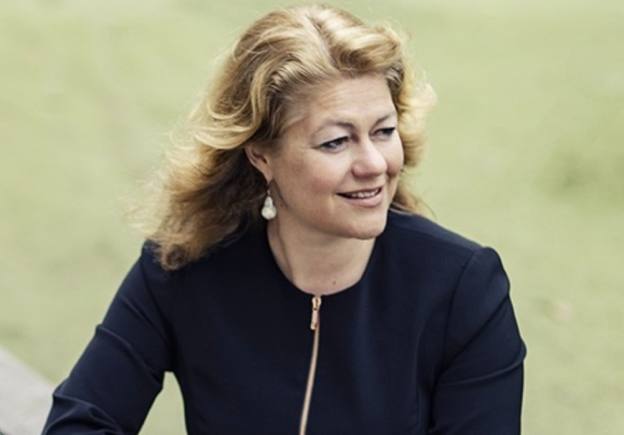
Article 1 / 4
What will the next stage of ESG investing look like?What does the current ESG landscape look like?

No environmental, social and governance finance, no planet? Many would agree yes, while some would still argue no.
It is clear investment is needed to help drive renewable energy development, create social advancement opportunities, enforce ethical business practices and boost companies that actively manage their ESG risks.
But a cost of living crisis and exponentially high inflation, together with rising interest rates, mean that many consumers and investors are struggling to incorporate ESG considerations into their daily decision-making.
Short-term pressures are outweighing longer-term goals.
So, do we stop here and drop ESG altogether as a no-go with a stunted future? To do so might well be to allow one major crisis to merge into the greater intensification of a worsening environmental and societal crisis.
According to Eugene Krishnan, chief financial officer of US digital health organisation Jaan Health: “It's easy to get discouraged that at this very moment people want to do ESG but they are not clear how to do it, and it feels like there’s a lot of greenwashing and other external pressures [on investors]”.
However, he feels it is also an opportunity “for dialogue”.
Do businesses have a role to play? Do businesses have or even want to have a social purpose?
These are questions investors should ask – and both investors and advisers have a crucial role to play in keeping the ESG conversation going, and continuing to apply pressure on the industry to be accountable and behave sustainably.
Solution to a test
For others, ESG is the solution to a test. Ashley Hamilton Claxton, head of sustainability at Royal London Asset Management, does not feel discouraged.
She views effective ESG as the solution to a test; an opportunity to engage with and respond constructively to current difficulties being faced in terms of climate, cost of living and the pandemic, for example.
“We are being tested in our ability to respond to complex and rapid change”, she says. “As human beings, we like and can deal with simplicity and certainty. Currently we have neither of those things.”
Hamilton Claxton describes the social, political, economic and climate context as being “very complex and challenging with long-term implications”.
Because of this, Hamilton Claxton believes the solutions are “equally complex and challenging”.
Could the answer be ESG interconnectivity?
Interconnectivity is vital, she says, adding: “I think what Covid taught us is the interconnection between ESG + C (climate) issues and between social, economic and financial challenges.”

Therefore, “part of the answer is for “financial services, companies and the government to think holistically about ESG issues and not tackle these things in isolation from each other”, she comments.
But interconnectivity between people, through dialogue, has to depend on people communicating and understanding ESG+C factors.
Krishan believes that another part of the answer towards figuring out solutions has to be in conversation.
He says: “We have to have people talking about these things with some sort of intellectual, moral and pragmatic rigour, and if you have people deciding on both sides, you’re much more likely to uncover how you can get balanced definitions and solutions.”
Conversations can also lead companies to put aside greater resourcing.
This is what Krishnan sees happening at present. “On the positive side, the fact we are having regular conversations about ESG, and companies are actually hiring resources, and investors also have resources is a positive sign.”
Steady growth and diversification
Against this backdrop of change and dialogue, dynamism and tension, Masja Zandbergen-Albers, head of sustainable integration at Robeco, reports positively on the steady growth in interest in ESG.
Zandbergen-Albers describes clients continuing to want to see more of a positive impact with their investments, adding environmental and social materiality to their investment processes.
She says: “Topics such as net zero, biodiversity, stewardship and SDGs [the UN's Sustainable Development Goals] in general are subjects that we discuss with our clients more and more.”
In response to this intensification of interest, Hamilton Claxton at RLAM describes how ESG has become more diversified. “Lumping it into one category can be misleading,” she says.
Zandbergen-Albers agrees, explaining how ESG investment options are widening.
“Sophistication in the market place is increasing, which means sustainable investing is now no longer one 'catch-all' phrase, but we are talking to our clients about the many different topics and the different ways they can implement their sustainability goals, alongside their financial goals.
“This happens across asset classes and across different investment strategies (quantitative, fundamental, index etc.).”
Different styles of sustainable investing
Some of these different ways of investing are outlined in the UN’s Stewardship guidelines in conjunction with the United Nations Principles for Responsible Investing.
These range from ethical investing, which screens out industries and companies considered damaging to people or planet, to responsible investing which involves engaging with companies through voting, and applying influence individually or collectively.
Robeco engages in ESG integration, where some ESG investments are integrated into part of a wider portfolio, to add stability and partial risk mitigation.
Zandbergen-Albers explains: “If you do ESG integration well, it can be very effective. We have seen added value for our global and emerging market fundamental strategies in terms of improving the investment analysis and contributing to alpha generation.”
She continues: “Creating and showing impact with investments in listed securities is much more difficult. Very little new capital is raised in equity and bond markets. Therefore an important part of our sustainable investing strategy is active ownership.”
This is where engagement comes in, she adds.
“Through (collaborative) engagement and voting we influence corporate behaviour.
“In our thematic and SDG investing frameworks we seek additionality in the products, services, innovation and new business models of the companies we invest (more) in, thereby providing these companies with a shareholder or bondholder that understands their purpose and business model and is aligned with a long-term investment view.”
Balanced outlook
While there remains a lot of clamour and excitement in the area of ESG, a balanced outlook needs to be taken.
Hamilton Claxton advocates that while “there is lots of innovation happening and this should be encouraged in this new emerging area, [it should also be] balanced with clear regulations and guidance to prevent greenwashing”.
For Krishnan, fear is often a factor. “People often see ESG in polarised extremes. Either you go totally green now, or clients are afraid they’ll have to give everything away so they do not go green at all.”
The solution, he feels, as with any social or any environmental change, is communication.
He says: “You have to have people talking about it, and come up with a solution where all stakeholders win.”




.png)
